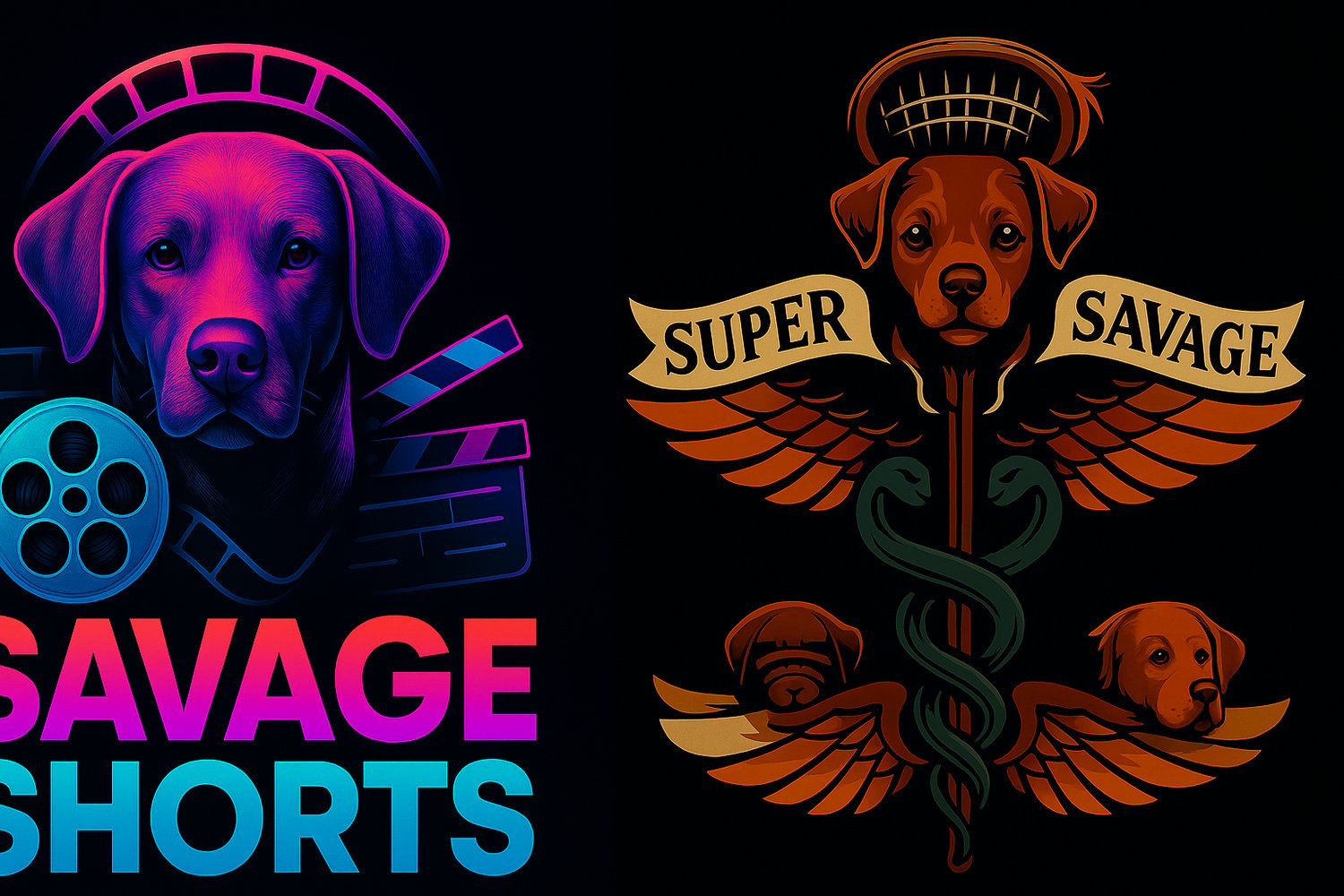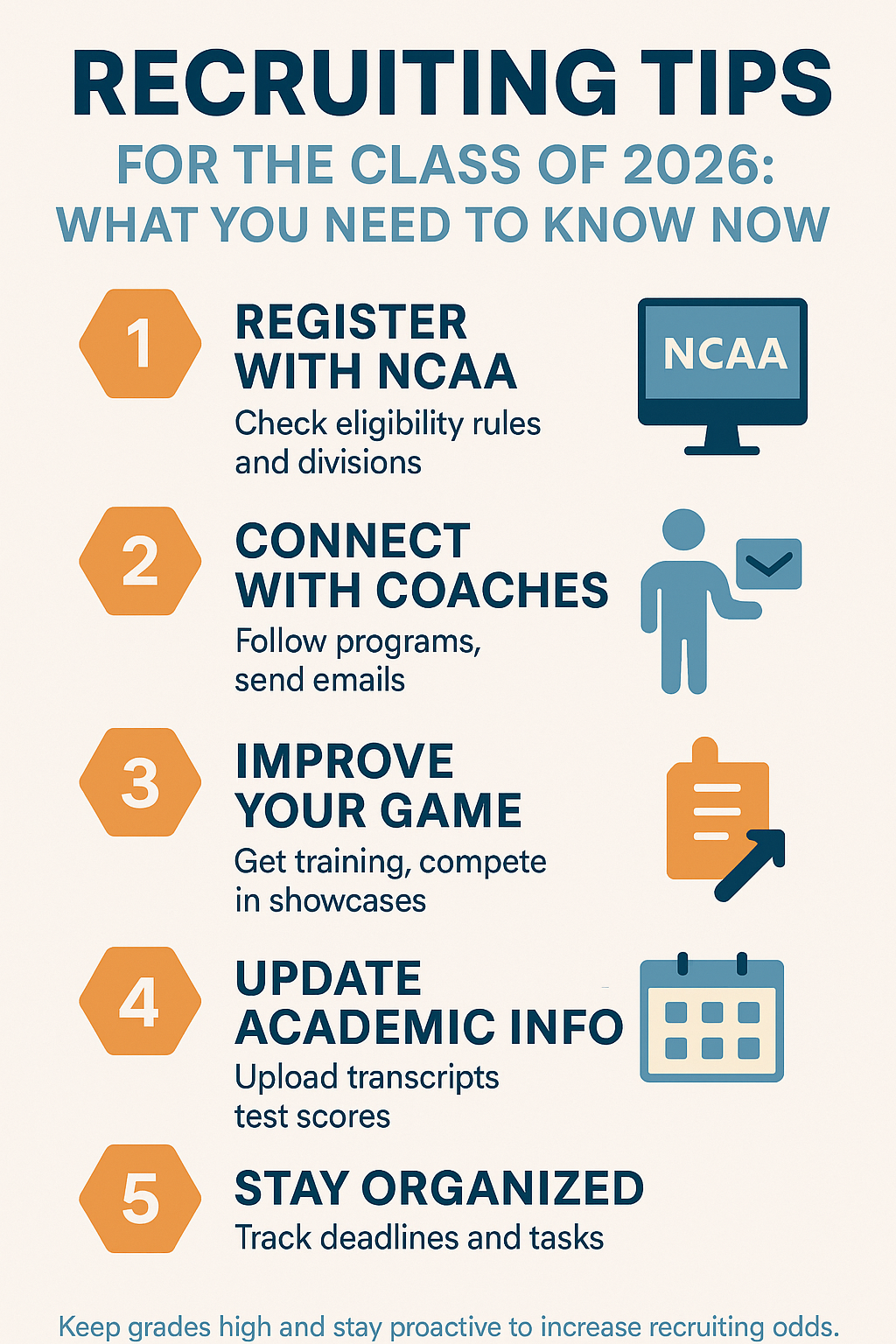If you’re in the Class of 2026 and want to play college sports, the time to get serious is right now. With new NCAA rules, NIL opportunities, and an increasingly competitive recruiting landscape, student-athletes must be proactive, strategic, and consistent, particularly as they head into their junior year.
Here are key recruiting tips for the Class of 2026 to help you stand out and stay on track.
⸻
1. Get Your NCAA & NAIA Eligibility Started
If you haven’t already done so, register with the NCAA Eligibility Center and the NAIA Eligibility Center. These platforms track your academic and amateur status, and coaches can’t officially recruit you without it.
“Early eligibility registration allows athletes to avoid last-minute academic surprises and speeds up coach interest” (Andrews, 2023).
You can start tracking your core courses, GPA, and test scores (if needed). The NCAA looks at your academic record from 9th grade on — it’s never too early.
⸻
2. Create or Update Your Highlight Video
By the summer after your sophomore year, you should have a highlight reel that shows your best plays, hustle, and skill. Please keep your presentation between 3 and 5 minutes long, and include your name, position, graduation year, and contact information.
“Coaches typically decide within the first 30 seconds of a highlight video if they want to learn more” (Lopez, 2024).
Update it after every season — fall, winter, or spring.
⸻
3. Email Coaches Directly — Now
Don’t wait for coaches to “find” you. Research programs you’re interested in and email coaches directly with a short intro, your highlight video, GPA, and test scores (if taken). Personalize your message!
“Athletes in the 2026 class should begin direct communication with college coaches as early as June 15 after their sophomore year — the first legal contact date for many sports” (NCAA, 2024).
If you’re in a sport like football or men’s lacrosse (with later contact periods), focus on camp invites, game film, and building interest until your contact window opens.
⸻
4. Attend the Right Camps & Showcases
Camps and showcases can be great exposure, but only if college coaches from schools you’re interested in are attending. Prioritize college-hosted camps over national ones unless you’ve been invited or know they fit your level.
“Targeted camps yield more offers because they allow for real-time evaluation by actual coaching staff” (Thompson & Reid, 2022).
Tip: Email coaches before the event and let them know you’ll be attending. They’re more likely to watch if they know who to look for.
⸻
5. Build a Simple Recruiting Profile
Create a Google Doc, PDF, or linktree-style page with your:
• Name
• Sport and position
• Height, weight, GPA, test scores
• Coach contact info
• Highlight video
• Social handles (if appropriate)
“A clean, single-click profile link gives coaches everything they need without digging” (Miller, 2023).
You can use this in all your emails and bios.
⸻
6. Maintain a Strong Academic Record
Academic performance can make or break recruitment, even for top athletes. Coaches want to know you’ll qualify academically and represent the program well.
“Student-athletes with a 3.5+ GPA have access to significantly more scholarships and school options than those below a 3.0” (Grant, 2024).
Please maintain your grades and consider taking the SAT or ACT if necessary.
⸻
7. Control Your Social Media Presence
Coaches, check your social media — count on it. Use platforms like Instagram, Twitter (X), and TikTok to showcase your work ethic, leadership, and film clips. Clean up anything inappropriate.
“Over 70% of coaches said they’ve stopped recruiting an athlete based on social media behavior” (Simmons, 2023).
Post wins, workouts, community service, and training clips — let your character shine through.
⸻
8. Build Relationships with Your High School & Club Coaches
They can be your biggest allies in recruiting. Keep them informed of your goals and the schools you’re reaching out to — they can help with emails, calls, and recommendations.
“College coaches often rely on trusted high school or club coaches for player evaluations and character checks” (Nguyen, 2022).
⸻
Final Tip: Stay Patient but Persistent
The recruiting process takes time. Just because your phone isn’t blowing up right now doesn’t mean it won’t later. Focus on improving, showcasing your progress, and staying visible.
⸻
References
• Andrews, L. (2023). Eligibility 101: What high school athletes need to know. Student-Athlete Readiness Quarterly, 8(1), 13–16.
• Grant, R. (2024). Academic edge: The GPA advantage in college recruiting. College Prep Insights, 10(2), 20–25.
• Lopez, D. (2024). The 2026 class and the power of film. Recruiting Video Trends, 12(1), 14–18.
• Miller, J. (2023). Simplifying your online profile for coaches. Digital Athlete Journal, 7(3), 19–22.
• NCAA. (2024). Recruiting calendars and contact periods by sport. Retrieved from ncaa.org.
• Nguyen, S. (2022). The coach connection: High school advocacy in recruiting. Athlete Development Weekly, 9(4), 27–30.
• Simmons, T. (2023). Social media mistakes that cost athletes scholarships. Online Behavior & Sports, 6(2), 11–15.
• Thompson, A., & Reid, H. (2022). Making Camps Count: Strategic Event Planning for Recruits. NextLevel Athletics Review, 5(1), 24–29.



Comments ()